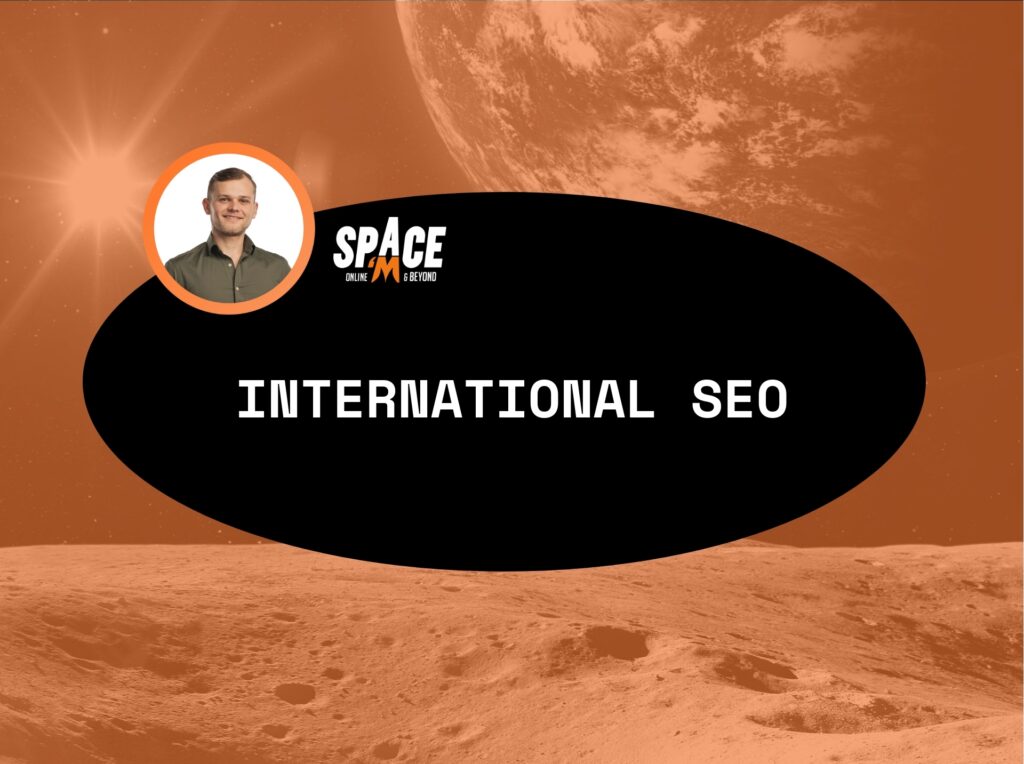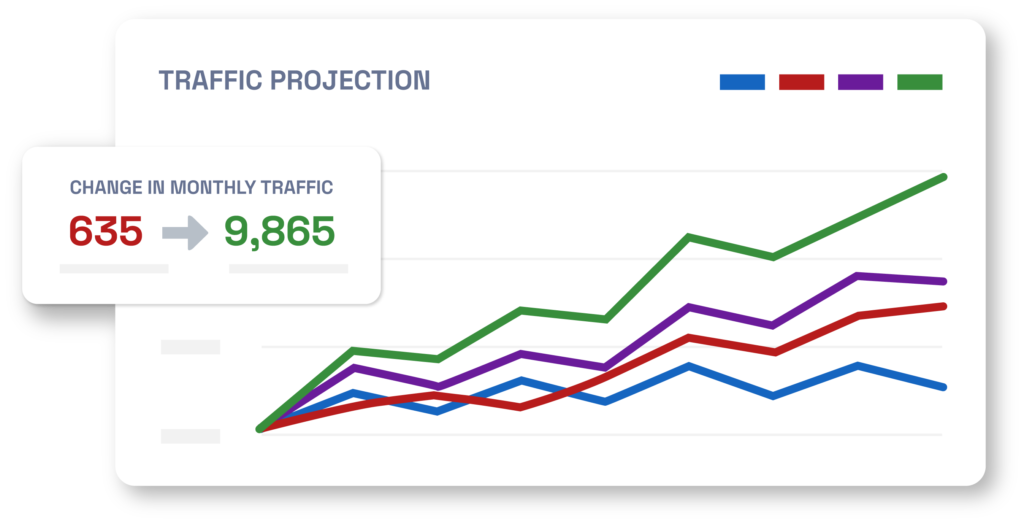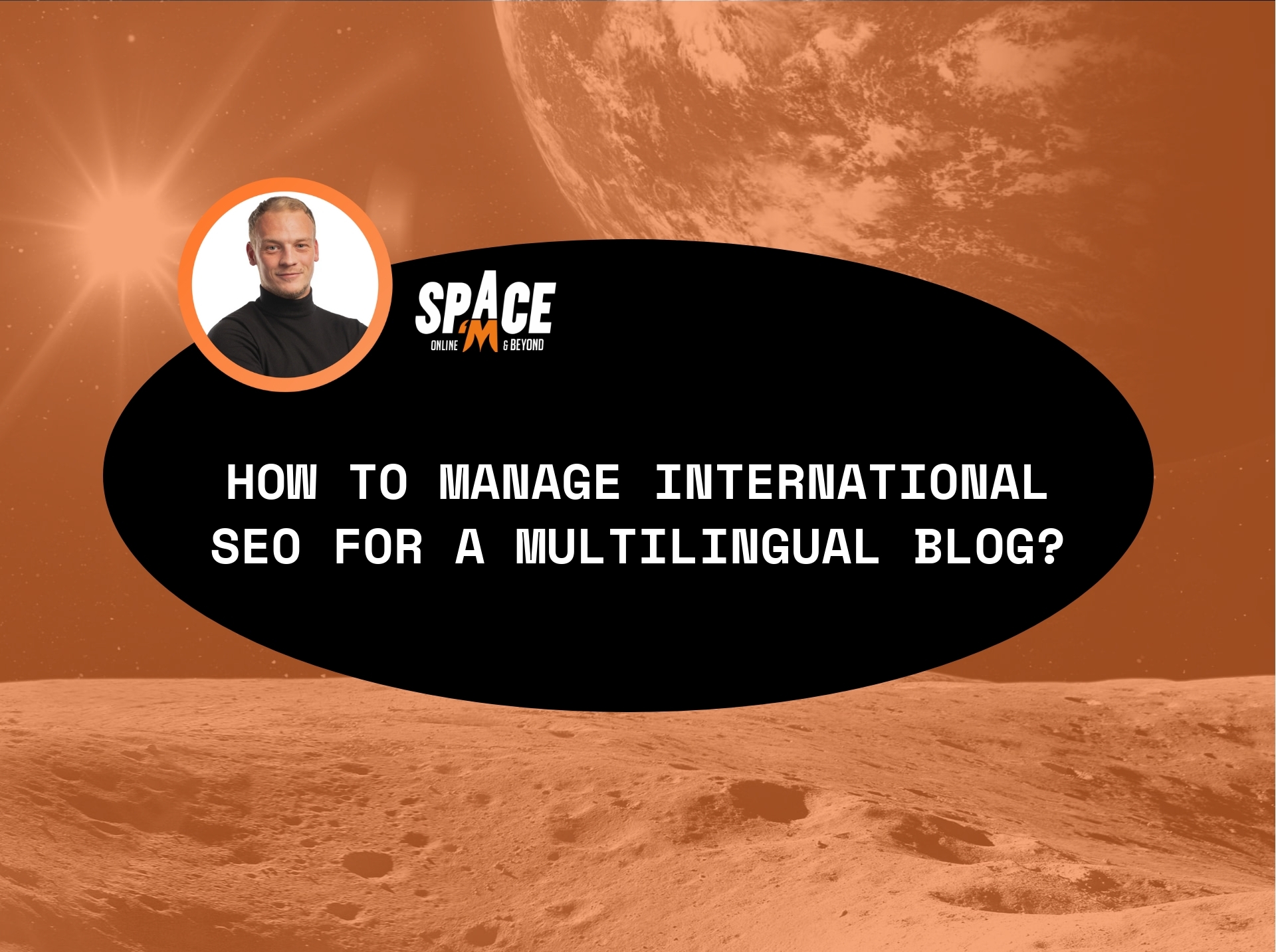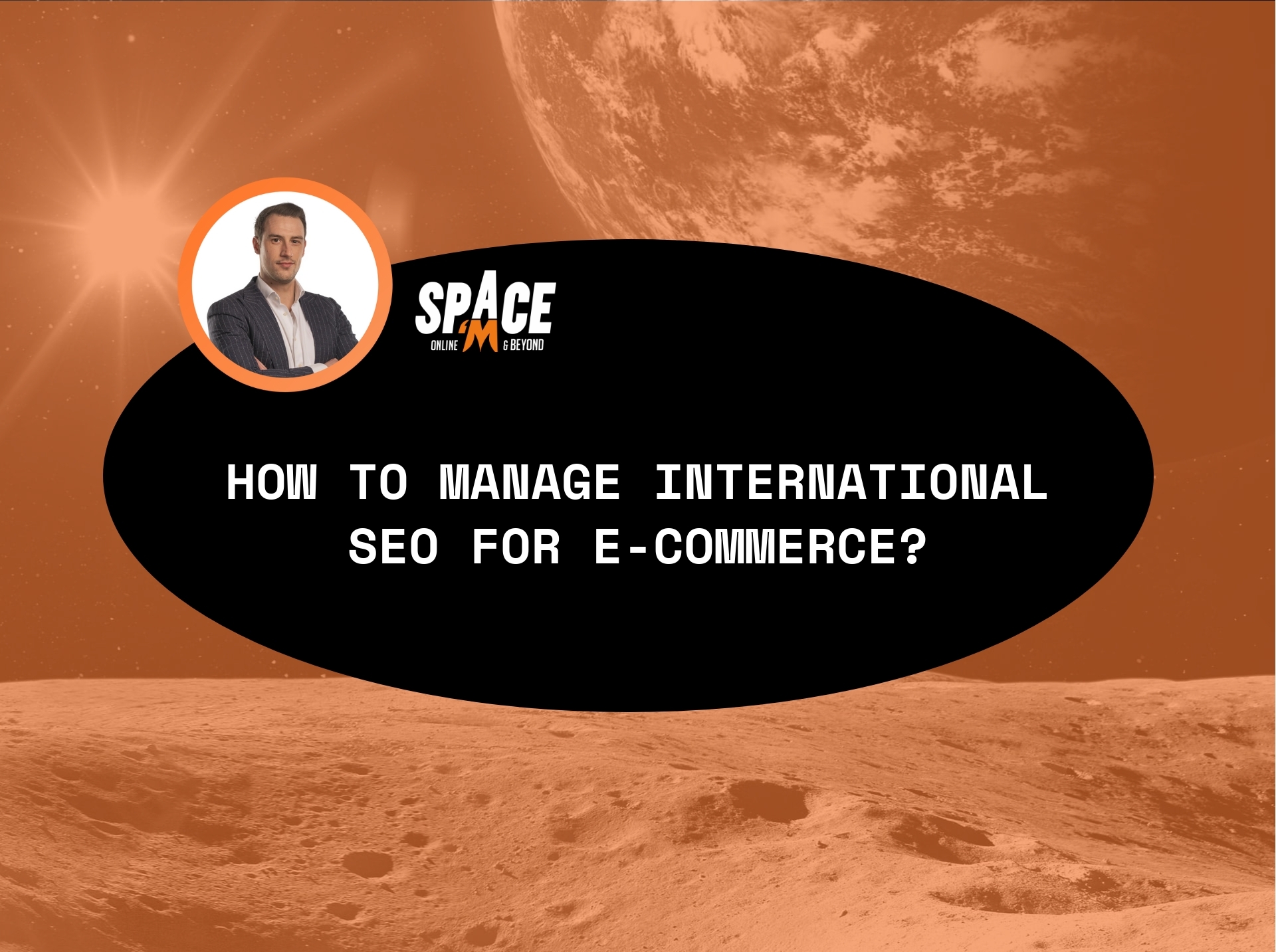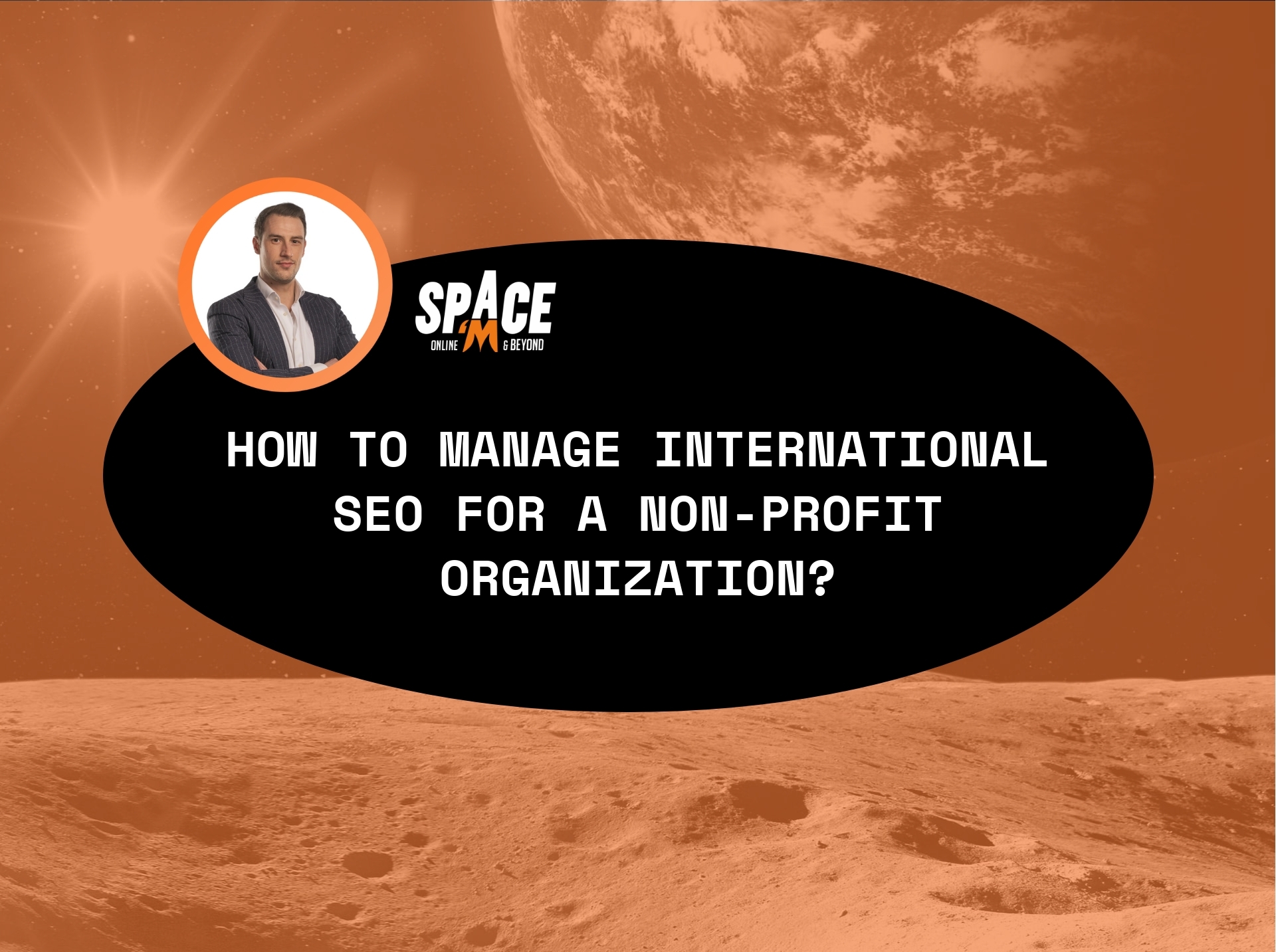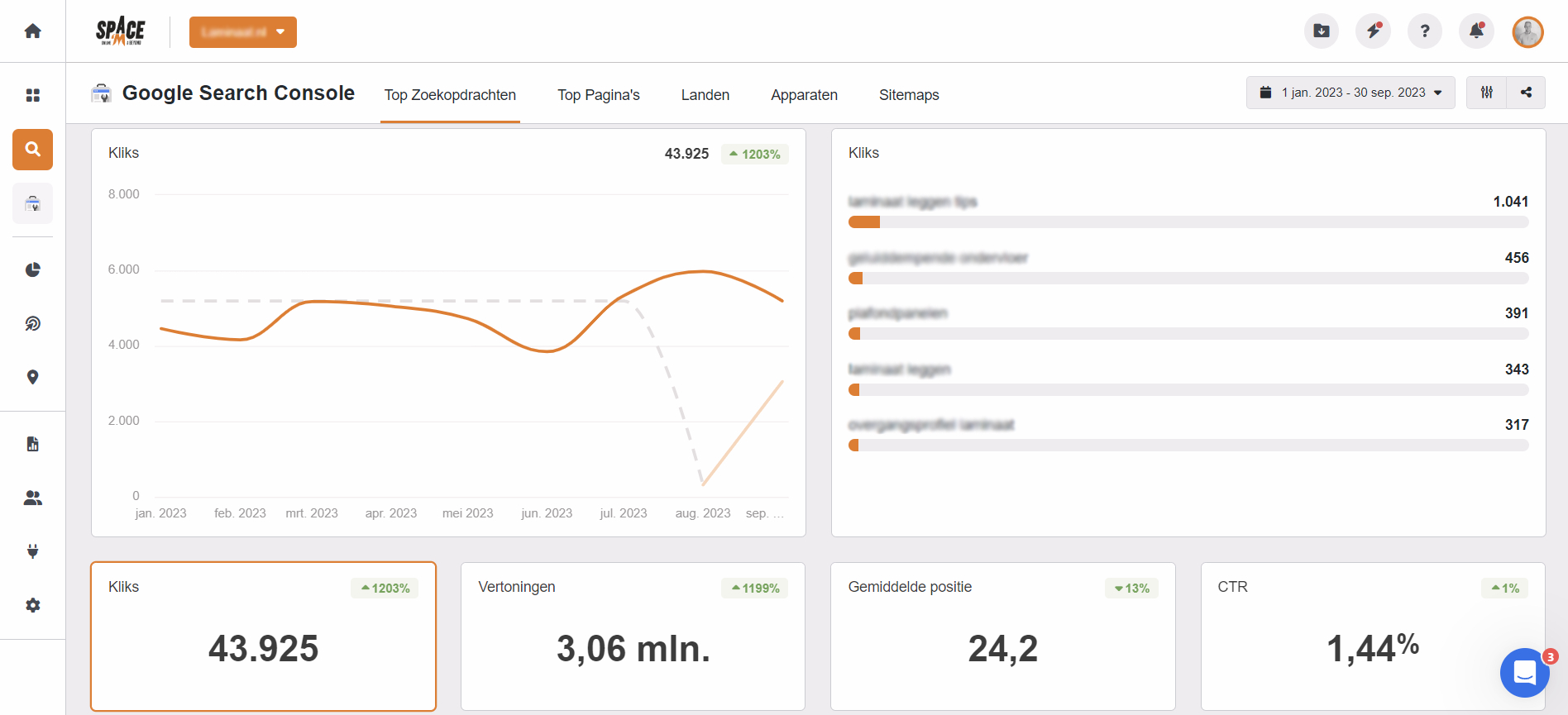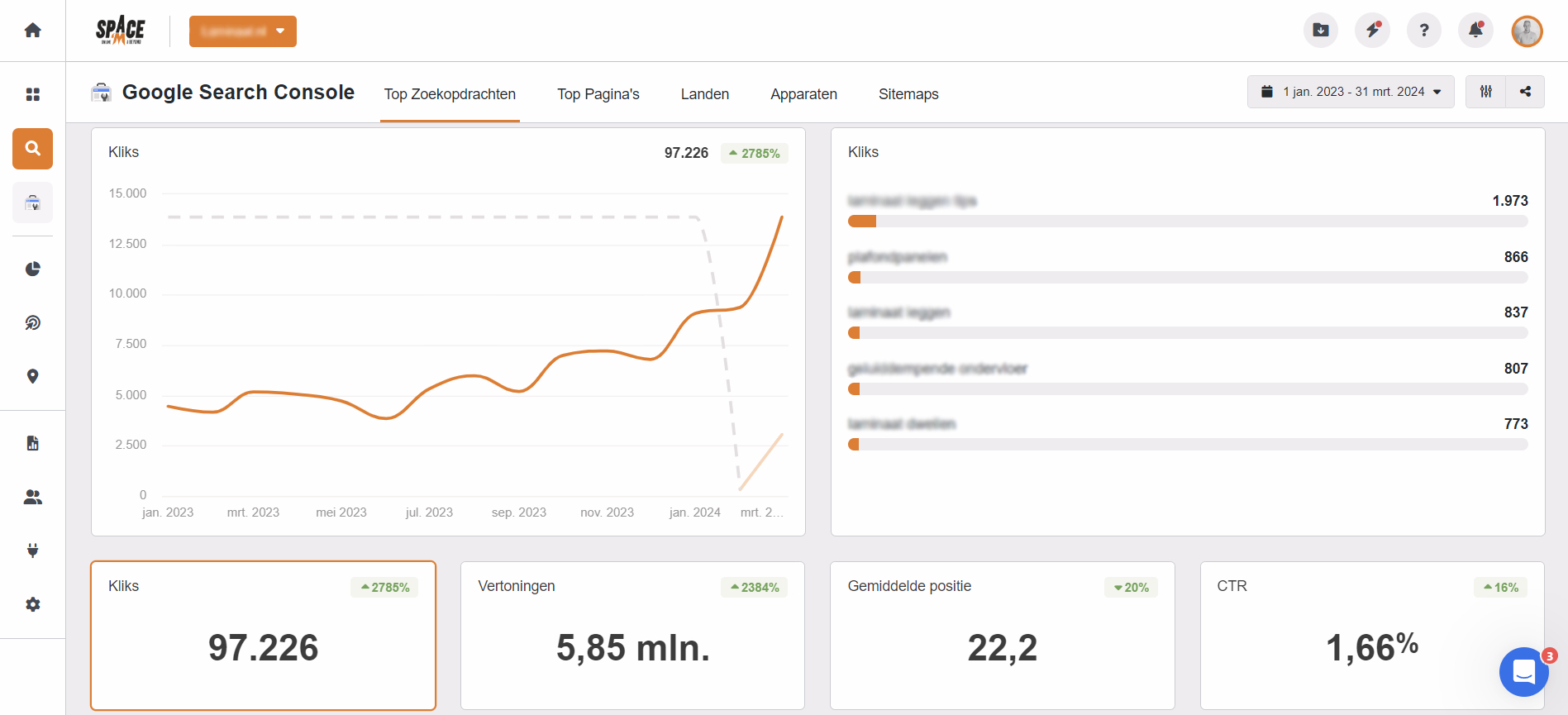Are you about to expand your business abroad or have you already gained experience in optimizing your website for the Dutch market? Then it’s time to get acquainted with international SEO. While you may already be familiar with the basics of search engine optimization, the international variant involves a bit more.
International SEO is not just about translating content or choosing the right keywords with international keyword research. You need to conduct keyword research to understand the specific terms and phrases used by customers in different locations.
Want to learn more? Then read our mega guide about multinational SEO to learn everything there is to know or to get an answer on almost every question about SEO for multiple countries, we will make sure that you will be able to do SEO for international sites in no-time:
Key takeaways
- Understanding International SEO: International SEO involves optimizing your website for users in different countries and languages to enhance visibility in global markets. It requires knowledge of local markets, cultural nuances, and structuring your website to be found worldwide.
- Multilingual vs. Multiregional SEO: Multilingual SEO focuses on providing content in different languages within the same geographic location, while multiregional SEO targets different regions or countries, each with unique search behaviors and terminology.
- Keyword Research and Content Localization: Effective international SEO demands thorough keyword research to understand specific terms used by customers in different regions. Localizing content goes beyond translation, requiring cultural adaptation and the use of relevant keywords.
- Technical SEO Elements: Proper implementation of hreflang tags, optimizing on-page elements, and ensuring a suitable international site structure (such as subdomains or subfolders) are crucial for indicating language and regional targeting to search engines.
- Building Local Backlinks and Compliance: Acquiring backlinks from local, reputable websites in each target market boosts local SEO efforts. Additionally, understanding and adhering to local regulations, such as data privacy and advertising laws, is essential for a successful international SEO strategy.
What is International SEO?
International SEO, or international search engine optimization, is the process of optimizing your website for users in different countries and in different languages. This helps to make your site visible in the international market and improves your rankings in search engines outside the Netherlands. Following international SEO best practices is crucial for expanding to new markets and optimizing websites for global reach.
Within international SEO, we distinguish between multilingual SEO and multiregional SEO. Multilingual SEO focuses on offering content in different languages for users who share the same geographic location, while multiregional SEO targets different geographic regions, each with their specific needs and search behaviors.
Multilingual SEO
Multilingual SEO refers to the process of optimizing your website for users who speak different languages, but may live in the same country or region. This type of SEO is essential if you want to reach a broad and diverse audience within a country or region where multiple languages are spoken.
Imagine you have a website that targets Belgium, a country where Dutch, French, and Flemish are spoken. An effective multilingual SEO strategy would ensure that your content is available in all these languages, using the same language as your target audience, and that each version is optimized for the specific keywords relevant to the speakers of those languages.
Multiregional SEO
Multiregional SEO goes a step further by not only targeting multiple languages but also multiple regions or countries. This is particularly relevant for businesses offering their products or services in different countries, where each market has specific needs and search behaviors.
An example of multiregional SEO could be a website that is active in both Spain and Mexico. While both countries speak Spanish, there will be differences in the terminology used, search habits, and cultural references.
A multiregional SEO strategy takes these differences into account and adjusts the website content accordingly to ensure optimal visibility and relevance in each specific target market.
What is international SEO vs local SEO?
When it comes to optimizing your website for search engines, understanding the differences between international and local SEO is crucial. Let’s explore these two approaches:
Target Audience:
- Local SEO: Designed to attract customers in a specific geographical area, such as a city or region. It’s beneficial for businesses with a physical presence in that area.
- International SEO: Focuses on optimizing a website for multiple countries and languages, catering to a diverse global audience.
Language:
- Local SEO: Primarily uses the language of the local region.
- International SEO: Requires optimization for multiple languages, considering cultural nuances and linguistic variations.
Keyword Research:
- Local SEO: Focuses on local keywords relevant to the specific area.
- International SEO: Requires thorough keyword research in each country and language.
Content:
- Local SEO: Typically involves creating content tailored to the local audience.
- International SEO: Involves unique content creation for each country and language.
Domain Structure:
- Local SEO: Often uses country-specific domains (e.g., .uk, .fr).
- International SEO: May use subdomains or subdirectories for different languages or regions.
Link Building:
- Local SEO: Focuses on local directories and relevant local websites.
- International SEO: Requires a broader link-building strategy across different countries.
Citations:
- Local SEO: Emphasizes accurate business listings and citations in local directories.
- International SEO: Needs consistent citations across various countries.
Google My Business:
- Local SEO: Vital for local businesses to optimize their Google My Business profiles.
- International SEO: Still relevant but with a broader scope across different regions.
In summary, local SEO targets a specific geographic area, while international SEO expands a business’s reach across borders, considering language, culture, and technical aspects.
Why is having a good international SEO strategy important?
A strong international SEO strategy is crucial for businesses that want to grow globally. International SEO efforts are essential when expanding into new markets, highlighting the importance of market research and strategic planning. By optimizing your website for different countries and languages, you can reach a significantly larger audience, leading to more traffic, more leads, and ultimately more sales.
How to Do SEO Globally?
Global SEO involves optimizing your website to attract visitors from various countries and languages. Whether you’re an e-commerce business, a multinational corporation, or a content creator, the following 5 steps will help you expand your reach internationally and show you how to do SEO on a global scale.
5 Steps To Do Worldwide SEO:
Expanding your online presence globally requires a strategic approach to search engine optimization (SEO). Whether you’re targeting international markets or reaching multilingual audiences, these five steps will guide you toward success:
- Keyword Research Across Languages:
- Conduct thorough keyword research for each target country and language.
- Use tools like Google Keyword Planner, Ahrefs, or SEMrush to identify relevant keywords.
- Consider cultural nuances and variations in search terms.
- Multilingual Content Creation:
- Create high-quality content in multiple languages.
- Translate existing content or produce original material for each audience.
- Optimize meta tags, headings, and alt text in the respective languages.
- Hreflang Tags Implementation:
- Use hreflang tags to indicate language and regional targeting.
- Include them in your HTML header to help search engines understand language variations.
- Ensure accurate implementation across pages and versions.
- International Link Building:
- Build backlinks from reputable websites in different countries.
- Collaborate with influencers, bloggers, and industry-specific platforms.
- Diversify anchor texts and focus on quality over quantity.
- Localize Technical SEO:
- Optimize website speed, mobile responsiveness, and user experience.
- Use a content delivery network (CDN) to serve content faster globally.
- Set up Google Search Console for each language version.
Global SEO requires a strategic approach, combining linguistic expertise, technical optimization, and cultural awareness. By following these steps, you’ll enhance your website’s visibility worldwide and connect with a diverse audience.
Why is SEO Different For Each Country?
SEO in other countries differs for several reasons, and every country needs a different strategy. These differences are mainly due to variations in language, culture, search intentions, and the use of different search engines.
- Language differences mean that certain keywords and sentence structures that are effective in Dutch may not resonate with or even be understood by non-Dutch speakers. Therefore, when targeting an international audience, thorough research into local keywords and expressions is essential.
- Understanding local search patterns and adapting keywords accordingly to incorporate the most relevant keywords is crucial for increasing organic traffic, conversions, and revenue.
- Cultural differences can also have a significant impact on the effectiveness of your SEO strategy. What is considered persuasive or appealing in one country may be seen as irrelevant or even inappropriate in another. Therefore, understanding cultural nuances and adapting your content accordingly is crucial.
- Furthermore, search intentions can vary by country. What people in the Netherlands search for on the internet may be different from what people in Japan or Brazil are looking for. This means that you need to adjust not only your keywords but also the content you produce to meet local needs.
Finally, the use of search engines varies from country to country. While Google is dominant globally, some countries have local search engines that are more popular, such as Baidu in China or Yandex in Russia. Knowledge of and optimization for these search engines is essential for successful international SEO.
What International Market Should I Target with Foreign SEO?
Choosing the right international market for your SEO efforts involves several key considerations:
- Existing Traffic and Demand: Analyze your current website traffic to identify which countries are already showing interest in your products or services. Tools like Google Analytics can provide insights into your international audience.
- Market Potential: Evaluate the market potential in different countries. Look at factors such as the size of the market, economic conditions, and internet penetration rates. Countries with a growing online population and strong economic indicators are often good targets.
- Competitive Landscape: Research the level of competition in potential markets. High competition might mean more effort and resources are needed to rank well, while low competition could present easier opportunities.
- Cultural and Language Fit: Consider cultural and language similarities. Markets that share cultural traits or languages with your home market might be easier to enter and succeed in.
- Regulatory Environment: Be aware of the legal and regulatory environment in each target market. Some countries have strict regulations regarding online content, data privacy, and advertising.
What Market Research Should You Do for International Sites?
Conducting thorough market research is crucial for the success of your international SEO strategy. Here are the steps you should follow:
- Identify Target Markets and Languages:
- Determine which countries and languages you want to target based on your business goals and existing data.
- Use tools like Google Trends and Ahrefs to identify where there is demand for your products or services.
- Analyze Competitors:
- Look at your competitors’ presence in the target markets. Tools like SEMrush and SimilarWeb can help you understand their strategies and performance.
- Identify gaps and opportunities where you can differentiate your offerings.
- Understand User Intent:
- Research the search behavior and intent of users in different regions. This includes understanding what keywords they use and what type of content they prefer.
- Use keyword research tools to find relevant keywords for each market.
- Cultural Considerations:
- Take into account cultural differences that might affect how your content is perceived. This includes language nuances, local customs, and preferences.
- Ensure your content is culturally appropriate and resonates with the local audience.
- Technical SEO and Localization:
- Optimize your website for local search engines and ensure it meets technical requirements such as fast loading times and mobile responsiveness.
- Implement hreflang tags to indicate language and regional targeting, and use local hosting if necessary.
By following these steps, you can effectively target international markets and optimize your website to attract and engage a global audience.
Common Challenges in International SEO
International SEO presents unique challenges, such as language barriers, cultural differences, and varying search engine preferences. Understanding and addressing these challenges is crucial for achieving success in global markets. The 5 most common challenges are:
- Language Barriers: Translating content accurately while maintaining its original meaning and context can be difficult. Automated translations often fail to capture nuances, leading to misunderstandings.
- Cultural Differences: Different regions have unique cultural norms and preferences that affect how content is perceived. Tailoring content to fit these cultural contexts is essential.
- Local Search Engine Preferences: Not all countries primarily use Google. For example, Baidu is dominant in China, and Yandex is popular in Russia. Understanding and optimizing for these local search engines is crucial.
- Technical SEO Issues: Implementing hreflang tags, managing multiple versions of a website, and ensuring proper geotargeting can be complex and prone to errors.
- Legal and Compliance Issues: Different countries have varying regulations regarding data privacy, content, and advertising. Ensuring compliance with these laws is necessary to avoid penalties.
Top 5 International SEO Mistakes to Avoid
Common mistakes in international SEO include failing to use hreflang tags, neglecting local keyword research, and not adapting content to cultural nuances. Avoiding these pitfalls can significantly improve your international SEO performance. Here are the top 5 international SEO mistakes in 2024:
- Incorrect Use of Hreflang Tags: Hreflang tags are crucial for indicating the language and regional targeting of a webpage. Incorrect implementation can lead to poor search visibility.
- Neglecting Local Keyword Research: Keywords that perform well in one country may not be relevant in another. Conducting thorough local keyword research is essential for effective SEO.
- Direct Translation of Content: Simply translating content without considering cultural context can result in content that feels unnatural or irrelevant to local audiences.
- Ignoring Local Backlink Building: Building backlinks from local websites is important for improving search rankings in specific regions. Neglecting this can hinder SEO efforts.
- Poor User Experience (UX) Across Regions: Ensuring that the website provides a good user experience for all regions, including mobile optimization and fast loading times, is critical.What are the best practices for multilingual SEO?
Best practices for multilingual SEO include using hreflang tags to indicate language targeting, creating high-quality localized content, and ensuring technical SEO elements are optimized for each language version of your site.
Top 5 International SEO Best Practices in 2024
In the ever-evolving landscape of digital marketing, staying ahead with the latest SEO practices is crucial, especially when targeting a global audience. International SEO involves optimizing your website to attract organic traffic from different countries and languages, ensuring that your content reaches the right audience in the right way. Here are the top 5 best practices for international SEO in 2024:
- Use Hreflang Tags Effectively: Implement hreflang tags to signal to search engines the language and regional targeting of your pages. This helps avoid duplicate content issues and ensures the right content is shown to the right audience.
- Create High-Quality Localized Content: Tailor your content to the cultural and linguistic preferences of each target market. This includes translating and localizing not just the text, but also images, videos, and other multimedia elements.
- Optimize Technical SEO Elements: Ensure that technical SEO elements such as meta tags, URL structures, and site speed are optimized for each language version of your site. This includes using language-specific sitemaps and ensuring fast loading times across different regions.
- Build a Local Backlink Profile: Focus on acquiring backlinks from reputable local websites in each target market. This can significantly boost your site’s authority and visibility in local search results.
- Monitor and Analyze Performance: Regularly track and analyze the performance of your international SEO efforts using tools like Google Search Console and local analytics platforms. Adjust your strategies based on data insights to continuously improve your SEO performance in different regions.
What are the key components of an international SEO strategy?
To be successful in international SEO, there are specific elements that require extra attention. These elements are also important for national SEO, but in the context of an international strategy, they play a crucial role in how effectively your website performs in different international markets. Language targeting, including the use of hreflang tags and other localization signals, is essential to indicate to search engines that your website is tailored to specific languages and regions.
In the following sections, we will delve deeper into some of the most crucial key components of international SEO: implementing an international site structure, optimizing on-page SEO elements for different countries, and building a local backlink profile.
1. Implementing an International Site Structure
One of the first steps in expanding your website to international markets is to think about the URL structure and its impact on search engine understanding, ranking, and user experience. The way you structure your international website can have a significant impact on SEO results.
There are several ways to approach this, depending on your business goals and the specific markets you are targeting. Each of these methods has its own benefits, making it important to think carefully before rolling out an international SEO strategy.
- Subfolders: Using subfolders for each language or region on your main domain (e.g., www.yoursite.com/en/ for England) is an effective way to organize content without the need for multiple domains.
- Subdomains: Creating separate subdomains for each region (e.g., en.yoursite.com for English content) can be useful if the markets are very distinctive and need to be managed separately. Read more about subdomains and subfolders for international SEO here.
- ccTLDs: Country-specific top-level domains (e.g., www.yoursite.de for Germany) can signal to both users and search engines that the site is specifically targeted at that country, which can help with local search engine rankings.
- URL parameters: Although less common, URL parameters can be used to denote region-specific versions of a page. However, this is usually not preferred due to potential confusion and complexity in management.
2. Optimizing On-page SEO for Different Countries with Keyword Research
Just like with SEO at the national level, it is crucial to optimize the on-page elements, such as titles, meta descriptions, and content, for the language and culture of the country you are targeting. This includes adjusting your content to local cultural nuances and ensuring that the language usage matches what is locally customary. Additionally, structuring internal links to facilitate movement through different regional and language versions is essential for better user and search engine navigation.
How to optimize images for international SEO?
Optimizing images for international SEO involves using descriptive file names and alt text in the target language, compressing images for faster load times, and ensuring images are culturally relevant to the target audience.
How to use schema markup for international SEO?
Schema markup can enhance international SEO by providing search engines with additional context about your content. Use localized schema markup to indicate language and regional targeting, and ensure it aligns with the content on your pages.
What are the best practices for localizing meta tags and descriptions?
Localizing meta tags and descriptions involves translating and adapting them to fit the cultural context of the target audience. Use relevant keywords and ensure the tone and messaging resonate with local users.
How to optimize for mobile users in different countries?
Optimizing for mobile users in different countries requires a responsive design, fast loading times, and content that is easily accessible on mobile devices. Consider local mobile usage patterns and preferences when designing your site.
3. Building A Local Or International Backlink Profile
Obtaining backlinks from websites that are relevant within a specific region can greatly help in improving your SEO performance in that region. Building a strong local backlink profile, possibly with the help of local partners and influential sites, is a powerful way to build authority and trust with local search engines.
How to build backlinks for international websites?
Building backlinks for international websites involves reaching out to local influencers, bloggers, and industry sites. Create high-quality, shareable content that appeals to the target audience and encourages natural link building.
What are important considerations for international SEO?
When setting up an international SEO strategy, there are several matters that require special attention. These considerations are crucial for the success of your strategy and must be carefully implemented. Utilizing Google Analytics is essential for analyzing and monitoring international website traffic and SEO performance.
Translating Content is Not Enough
Simply translating content is not enough to meet the needs of users in different countries. Localization, the process of adapting your content to the cultural and social context of a specific country, is essential here. This involves not only adjusting the language but also taking into account local customs, cultural differences, and the specific search intentions in a region or country.
Ensure Correct Implementation of hreflang Tags for Language Targeting
Correctly implementing hreflang and canonical tags is essential for multiregional and multilingual sites. These tags help search engines understand which version of a page is most relevant for a specific region or language, ensuring that users see content that is intended for them. Correct implementation improves the user experience and enhances SEO results.
Opt for a Generic Top-Level Domain
For businesses looking to expand internationally, opting for a generic top-level domain (gTLD) such as .com or .org from the start can be a wise choice. A gTLD has no specific geographic association and can therefore be more easily adapted for international users. This is especially useful if you later decide to expand into new markets.
How much does international SEO cost?
The expense of search engine optimization on an international scale varies based on the project’s scope and complexity, as well as the specific services required. Typically, international SEO costs range from as low as €500 per month to over €30,000 per month. Factors influencing pricing include the size of the business, the amount of content and backlinks needed, and the choice of SEO provider.
Payment models for international SEO services vary and can include:
- Monthly retainers
- Fixed contracts
- One-time projects
- Hourly rates
Investing in multi-regional SEO efforts from experienced digital agencies, including those with tailored strategies, can deliver a higher return on investment (ROI), meeting the unique needs of each business with their team of international seo specialists.
Overview of international SEO costs and pricing
Gaining insight into the costs and pricing of foreign SEO services is vital for businesses strategizing their SEO investments. Space’M Online offers various packages designed to meet different needs and budgets. Here is an overview of their pricing:
| MOON | 🚀 See results in: 6 to 12 months Introductory Talk | 🚀 Detailed market analysis 🚀 Technical website review 🚀 Content team support 🚀 Transparent reporting 🚀 Monthly update call(s) 🚀 Direct line with senior SEO 🚀 15 hours of SEO work | 🪐 €1,500/month Cancel at any time |
| MARS | 🚀🚀 See results in: 4 to 8 months Introductory Talk | 🚀 Detailed market analysis 🚀 Technical website review 🚀 Content team support 🚀 Transparent reporting 🚀 Monthly update call(s) 🚀 Direct line with senior SEO 🚀 30 hours of SEO work | 🪐 €3,000/month Cancel at any time |
| JUPITER | 🚀🚀🚀 See results in: 3 to 6 months Introductory Talk | 🚀 Detailed market analysis 🚀 Technical website review 🚀 Content team support 🚀 Transparent reporting 🚀 Monthly update call(s) 🚀 Direct line with senior SEO 🚀 50 hours of SEO work | 🪐 €5,000/month Cancel at any time |
How to measure the success of an international SEO campaign?
Measuring the success of an international SEO campaign involves tracking various metrics and analyzing the data to understand the impact of your strategies. By focusing on key performance indicators (KPIs) and following best practices for reporting, you can gain valuable insights into your campaign’s effectiveness and make informed decisions for future improvements.
What are the key metrics to track in international SEO?
Tracking the right metrics is crucial for evaluating the success of your international SEO efforts. Here are some key metrics to monitor:
- Organic Traffic: Measure the number of visitors coming to your site from organic search results in different regions.
- Keyword Rankings: Track the rankings of your targeted keywords in various countries and languages.
- Conversion Rate: Analyze the percentage of visitors who complete desired actions, such as making a purchase or filling out a form, from different regions.
- Bounce Rate: Monitor the percentage of visitors who leave your site after viewing only one page, and compare this across different regions.
- Backlinks: Track the number and quality of backlinks from international websites to assess your site’s authority and reach.
- Local Search Visibility: Measure your site’s visibility in local search results, including Google My Business and local directories.
What are the best practices for international SEO reporting?
Effective reporting is essential for understanding the performance of your international SEO campaign and communicating results to stakeholders. Here are some best practices for international SEO reporting:
- Segment Data by Region: Break down your data by country or region to identify trends and performance differences across markets.
- Use Visualizations: Utilize charts, graphs, and maps to present data in a clear and engaging way.
- Set Clear Goals: Define specific, measurable goals for your international SEO campaign and track progress towards these objectives.
- Regular Reporting: Provide regular updates on your campaign’s performance, such as monthly or quarterly reports, to keep stakeholders informed.
- Actionable Insights: Include actionable recommendations based on your data analysis to guide future SEO strategies and improvements.
- Custom Dashboards: Create custom dashboards in tools like Google Analytics to easily monitor key metrics and track progress over time.
Space’M Online, the best international SEO agency
Owing to its leadership and innovative SEO strategies, Space’M Online distinguishes itself as the top international SEO Agency. The company boasts a history of successful SEO campaigns that have helped businesses achieve top positions in search results, leading to increased sales and more leads. Their holistic approach includes:
- Tailored strategies based on detailed market analysis for market dominance
- Emphasis on quality, transparency, and result-oriented approaches
- Setting and monitoring KPIs to ensure full insight and transparency for their clients
Working with Space’M Online offers the following benefits:
- Immediate rollout of their SEO framework
- Detailed work by their technical and content teams
- Direct contact with senior SEO experts and dedicated account managers
- Flexibility to cancel at any time
The company’s commitment to “No bullshit, just international SEO rankings, results and more traffic each month” ensures client satisfaction. Space’M Online focuses on online businesses, specifically those in the 7 to 8 figure range. Partnering with Space’M Online will unleash the potential of your website, ensuring your business achieves online success and gets the attention it deserves.
For Which Target Countries Do We Offer International SEO?
At Space’M Online, we offer comprehensive SEO services for various target countries like a international SEO audit. While our expertise primarily lies in the field of SEO within Europe, our services also extend to markets outside Europe, enabling us to support a wide range of businesses in their international growth.
- SEO in the Netherlands
- SEO in France
- SEO in Germany
- SEO in Italy
- SEO in Spain
- SEO in United Kingdom
- SEO in the United States
Our team of SEO experts has extensive experience working in various markets and understands the unique challenges and opportunities each country offers. Is the particular country you want to expand to not listed? Feel free to contact us to discuss the possibilities and opportunities.
Frequently asked questions
We recognize that you might have inquiries about our international SEO services and our modus operandi. Here are some frequently asked questions to help clarify our approach and the benefits of partnering with Space’M Online:
How do search engines handle different languages and regions?
Search engines use various signals to handle different languages and regions, such as hreflang tags, URL structures, and localized content. These signals help search engines understand which version of a page to show to users based on their language and location, ensuring relevant and accurate search results.
What are the best tools for international SEO?
The best tools for international SEO include Google Search Console, SEMrush, Ahrefs, and Screaming Frog. These tools help with keyword research, competitor analysis, technical SEO audits, and tracking performance across different regions and languages.
How to handle duplicate content for sites with same language in global SEO?
To handle duplicate content issues in international SEO, use hreflang tags to indicate language and regional targeting, and canonical tags to specify the preferred version of a page. This helps search engines understand the relationship between different versions of your content and avoid duplicate content penalties.
What are the legal considerations for international SEO?
Legal considerations for international SEO include compliance with local data protection laws, copyright regulations, and advertising standards. It’s essential to understand and adhere to the legal requirements of each target market to avoid penalties and build trust with your audience.
What role does social media play in international SEO?
Social media plays a significant role in international SEO by driving traffic, increasing brand visibility, and fostering engagement with a global audience. Sharing localized content on social media platforms can enhance your SEO efforts by generating backlinks and social signals that improve search engine rankings.
What are the benefits of using local hosting for international SEO?
Using local hosting for international SEO can improve website loading times and user experience for visitors from specific regions. Faster loading times can lead to better search engine rankings and higher engagement rates, ultimately boosting your site’s performance in local search results.
How to use Google Search Console for international SEO?
Google Search Console can be used for international SEO by setting up country and language targeting, monitoring site performance, and identifying issues specific to different regions. It provides valuable insights into how your site is performing in various markets and helps you optimize your international SEO strategy.
How to optimize for voice search in different languages?
To optimize for voice search in different languages, focus on natural language processing, long-tail keywords, and local dialects. Create content that answers common questions in a conversational tone and ensure your site is mobile-friendly and fast-loading to cater to voice search users.
How to optimize for different cultural preferences in SEO?
Optimizing for different cultural preferences in SEO involves understanding the cultural nuances, preferences, and behaviors of your target audience. Tailor your content, design, and marketing strategies to resonate with local audiences, and use localized keywords and phrases to improve relevance and engagement.
How to optimize for other search engines like Bing, Baidu or Yandex?
To optimize for search engines like Bing, Baidu, or Yandex, you need to understand their unique algorithms and preferences. Bing values multimedia content and social signals, Baidu prioritizes local Chinese content and prefers websites hosted in China, Yandex focuses on local relevance and user behavior, making it important to optimize for local keywords and ensure your site is user-friendly for Russian audiences.
How to optimize for international app store SEO?
Optimizing for international app store SEO involves several key steps. First, conduct keyword research for each target market to identify relevant search terms.
Next, localize your app’s title, description, and metadata to match the language and cultural preferences of each region. Use high-quality localized screenshots and videos to showcase your app’s features.
Encourage positive reviews and ratings from users in different countries, as these can significantly impact your app’s visibility. Finally, regularly update your app to keep it relevant and address any issues that users report.


